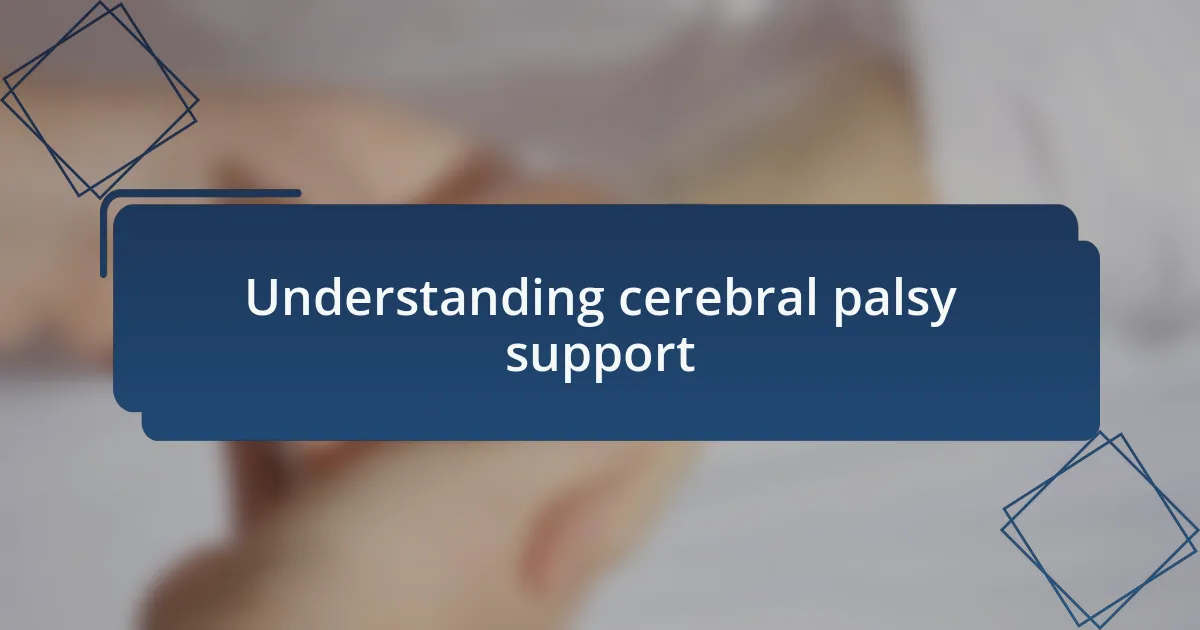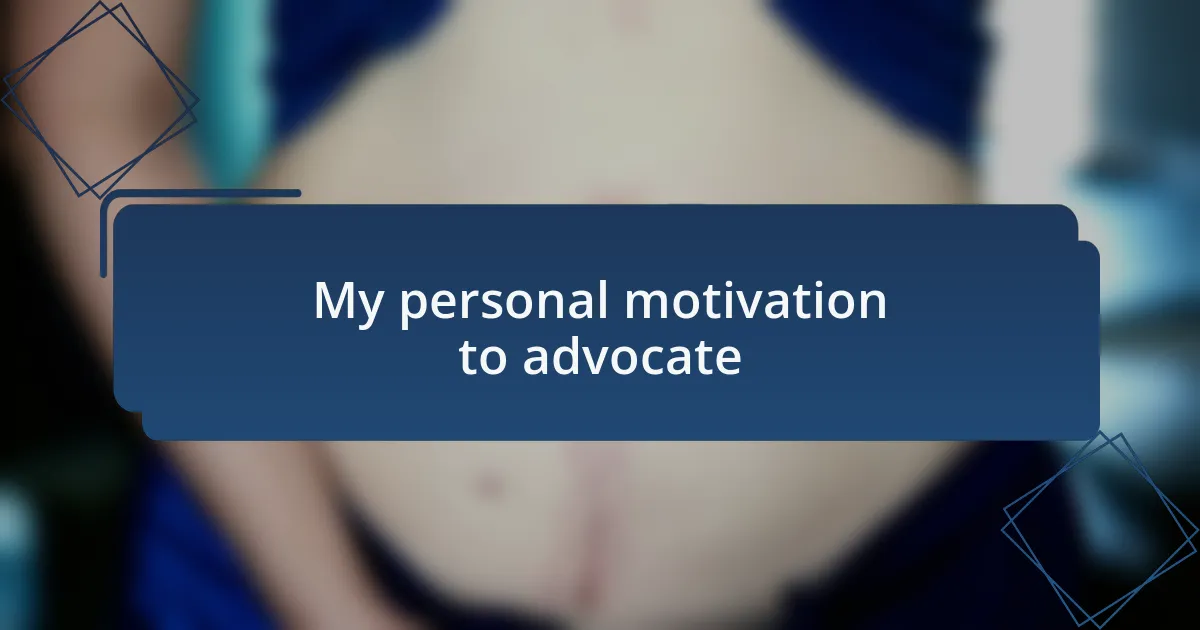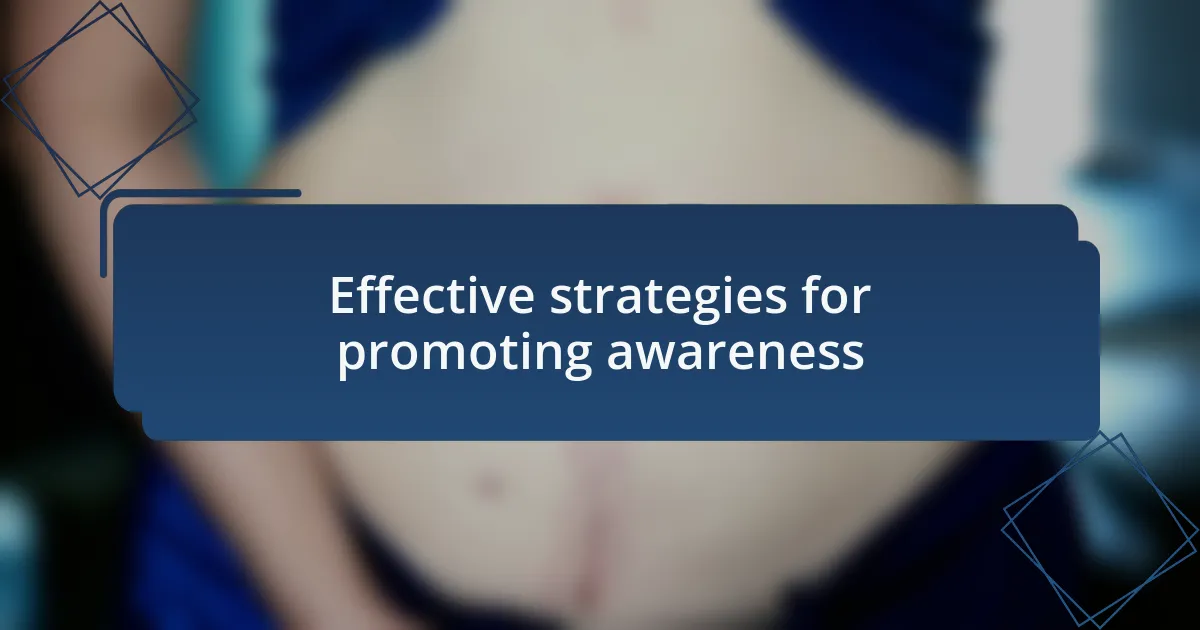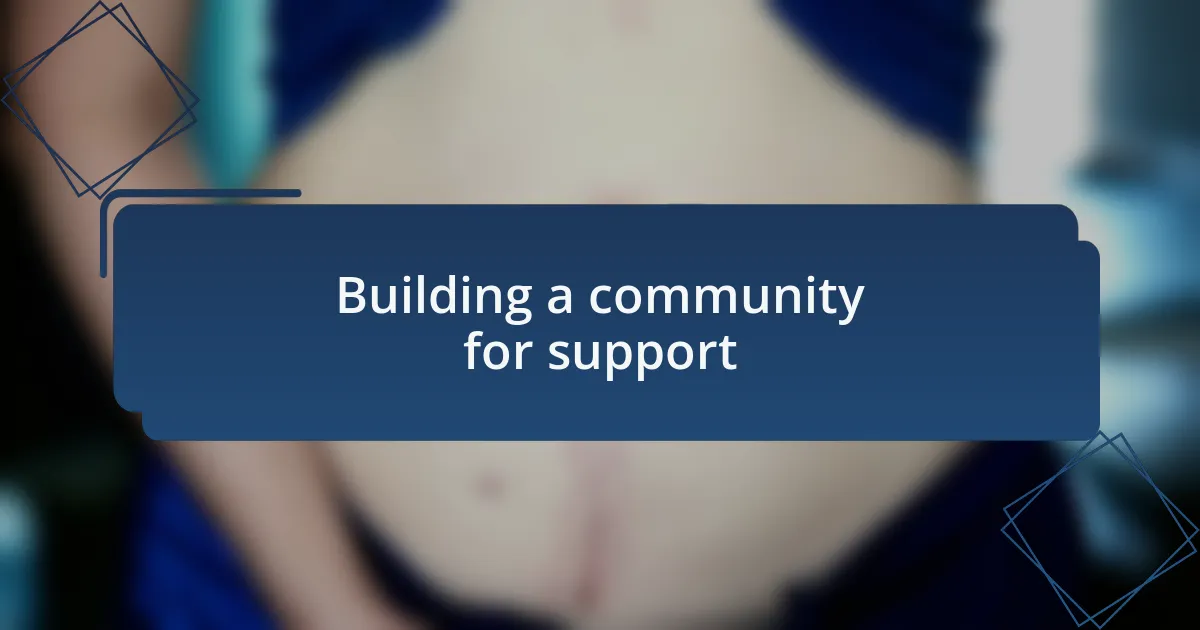Key takeaways:
- Cerebral palsy support includes various resources like physical therapy and assistive technologies, emphasizing the need for tailored approaches to individual needs.
- The author’s personal advocacy is motivated by their own experiences and the desire to empower others through connection and storytelling.
- Challenges in advocacy include stigma, lack of resources, and the complexity of policies, highlighting the need for simpler processes.
- Effective awareness strategies involve storytelling, leveraging social media, and collaborating with local organizations to strengthen community support.

Understanding cerebral palsy support
When I first began to understand the support available for individuals with cerebral palsy, I was surprised by how varied it is. From physical therapy that helps improve mobility to assistive technologies that enhance communication, each resource plays a crucial role. Have you ever considered how something as simple as a communication device can change someone’s world?
My experiences led me to appreciate the invaluable role of community support networks. I recall attending a local support group where parents shared their journeys and challenges. Witnessing their resilience was eye-opening for me—realizing that emotional support can be just as vital as physical interventions. It made me wonder how many people might find strength in shared experiences.
Ultimately, the essence of cerebral palsy support is about tailoring approaches to individual needs. No two journeys are the same, and what works for one person may not work for another. This insight propelled me to advocate for personalized plans, emphasizing that understanding each individual’s unique challenges and strengths is key to effective support.

My personal motivation to advocate
My motivation to advocate for disabled rights stems from my own experiences within the cerebral palsy community. I vividly recall the frustration I felt as a teenager when I struggled to access resources that could have made a difference in my daily life. This realization pushed me to become a voice for those who might not yet feel empowered to speak up for themselves. Have you ever felt that strong urge to make a change when you’ve faced a personal challenge? That’s how it all began for me.
One particular moment stands out: I was at a community event when I met a young girl who reminded me of my younger self. She was sitting alone, clearly wanting to join a conversation but hesitant to speak. I approached her, and we began to talk about her dreams. I saw how a little encouragement could ignite her confidence, and it became clear that advocating isn’t just about policy changes; it’s also about making personal connections. Isn’t it amazing how one small interaction can create a ripple effect?
Ultimately, my journey is fueled by a deep belief that everyone deserves a platform to express their needs and desires. Each story I hear strengthens my resolve to challenge systemic barriers and promote inclusivity. When I stand up for others, I also stand up for my younger self, and it’s this dual advocacy that keeps me inspired. Who doesn’t want to be part of something bigger than themselves?

Key challenges faced in advocacy
One significant challenge I’ve encountered in advocacy is the pervasive stigma surrounding disabilities. I remember attending a town hall meeting where I attempted to voice concerns about accessibility in our community. Instead of engaging with my points, some attendees seemed uncomfortable, as if my presence disrupted their comfort zone. Have you ever tried to express a critical issue only to feel dismissed? That moment highlighted the barriers not just in infrastructure, but also in mindsets.
Another obstacle I’ve faced is the lack of resources and funding for initiatives aimed at supporting individuals with disabilities. I once worked on a project that aimed to provide assistive technology to local schools. Despite my best efforts to rally support, the funding was inadequate, and I was left feeling disheartened. It made me wonder: why is advocating for equal opportunities often met with financial hurdles? This experience taught me that advocacy requires not just passion, but also tangible support, which can sometimes feel out of reach.
Finally, navigating the complex landscape of policies and regulations can feel overwhelming. I recall spending hours combing through legislation to understand how best to advocate for changes that would benefit my community. It’s easy to become disillusioned when faced with bureaucratic red tape. How do you make your voice heard in a system that often feels unresponsive? This challenge reinforces my commitment to simplifying the advocacy process for others, so no one feels as lost as I did.

Effective strategies for promoting awareness
One effective strategy I’ve found in promoting awareness is storytelling. I recall a time when I shared my own experiences at a community event, describing the daily challenges faced by individuals with cerebral palsy. The room fell silent, and I could see people leaning in, captivated. Isn’t it fascinating how personal stories can evoke empathy and spark genuine conversations?
Another crucial approach is harnessing social media platforms. I’ve seen firsthand how a single well-crafted post can reach thousands, sharing insights and fostering community support. When I started a campaign on Instagram showcasing local advocates and their journeys, I was amazed by the engagement it generated. Have you ever tried to amplify your voice online? The immediate connections made me realize the power of digital platforms in spreading awareness far beyond local boundaries.
Lastly, collaboration with local organizations can significantly enhance awareness efforts. I remember partnering with a nearby disability rights group for a fundraising event. Together, we merged our strengths, drawing attention to issues that mattered. It made me think: why go it alone when we can amplify our impact through teamwork? By combining resources and expertise, we can create a stronger, unified front that truly resonates within our communities.

Building a community for support
Building a sense of community around support for individuals with disabilities is essential. I remember attending a coffee morning for parents of children with cerebral palsy. The genuine warmth in the room as we exchanged stories made me realize how crucial it is to foster connections. Have you ever felt the power of simply sharing a struggle with someone who truly understands?
Creating spaces for open dialogue is another cornerstone of building community. I once organized a small discussion group aimed at exploring our collective experiences. The vulnerability and honesty displayed by everyone were remarkable. In that environment, we not only found common ground but also strategies for overcoming daily challenges. Isn’t it enlightening how sharing struggles can lead to resilience?
Additionally, I believe that including diverse voices within our community strengthens our advocacy. I recall inviting a local artist who also has a disability to share their work at one of our events. Their unique perspective opened up new conversations about creativity and capability. It made me ponder: how can we continue to uplift a myriad of voices and ensure that everyone feels valued in our shared journey?